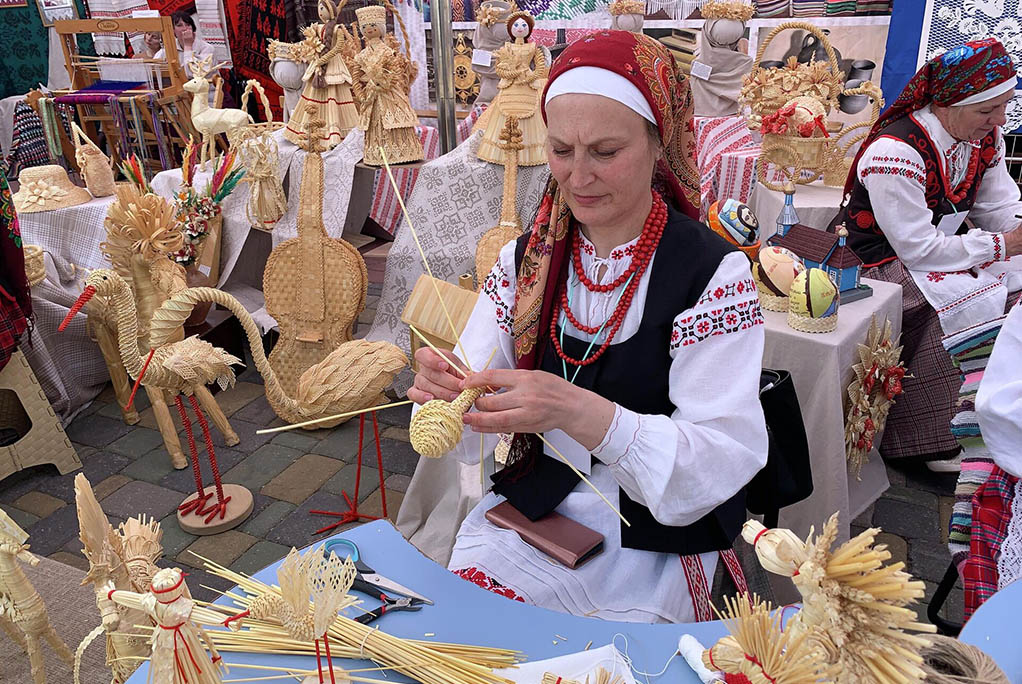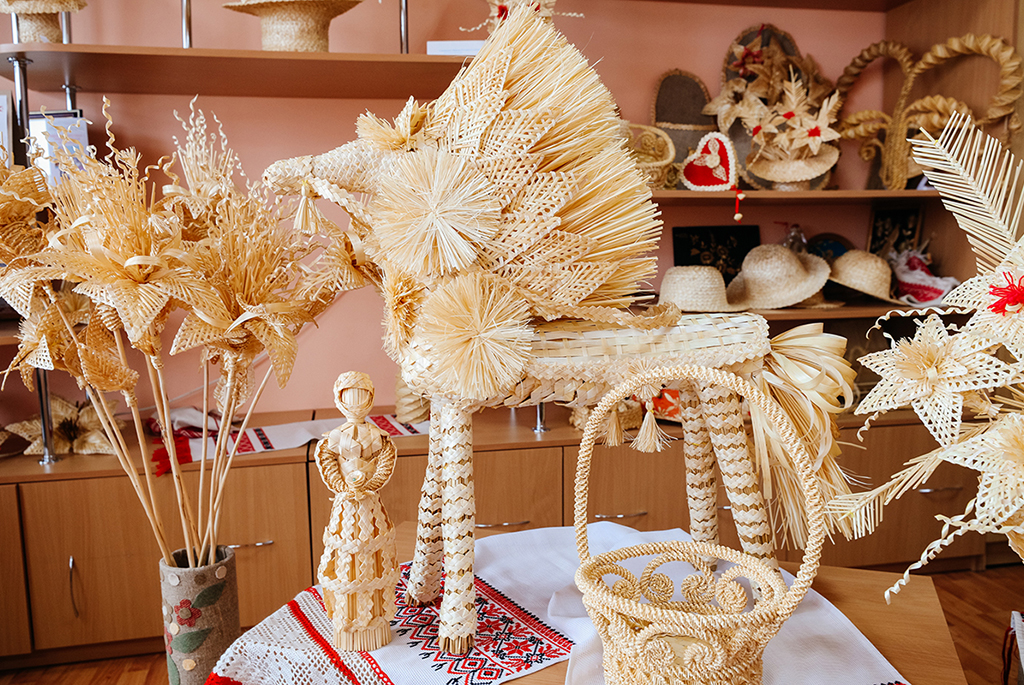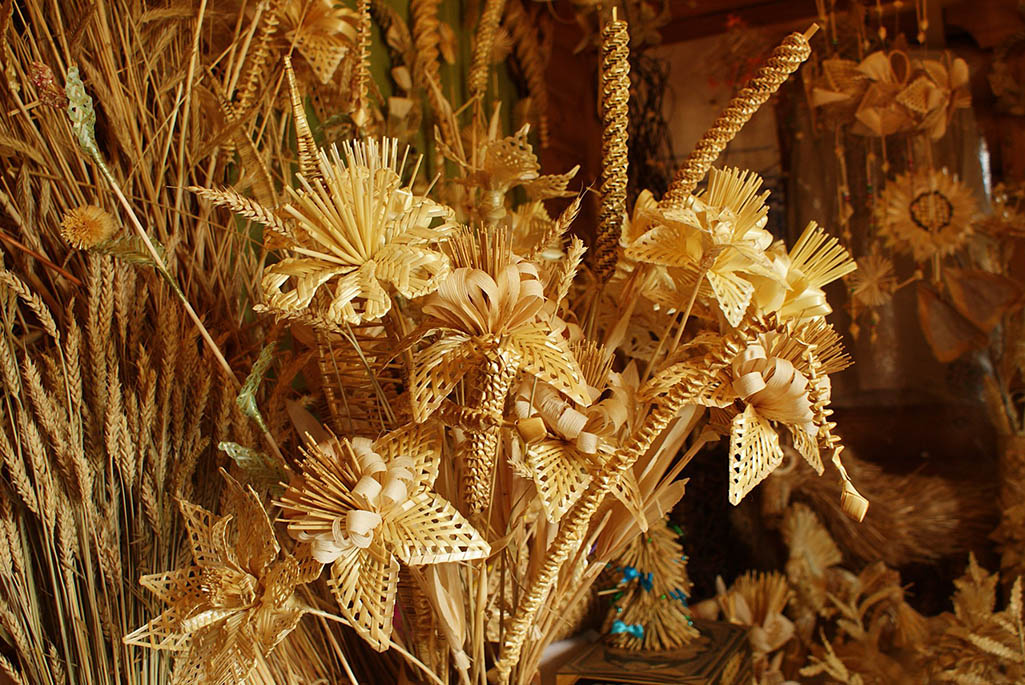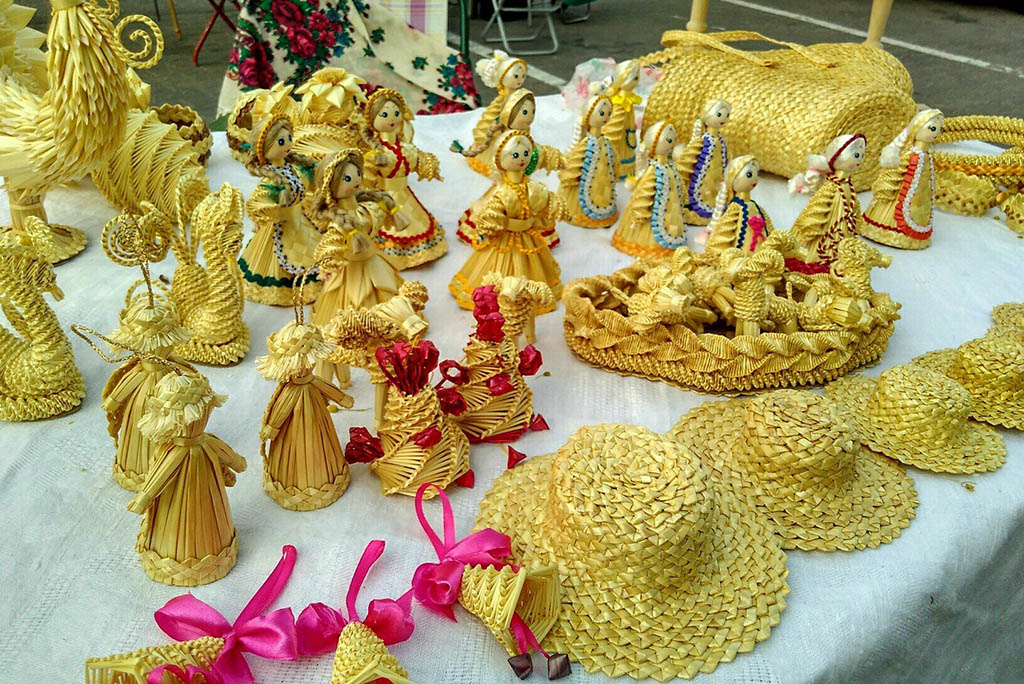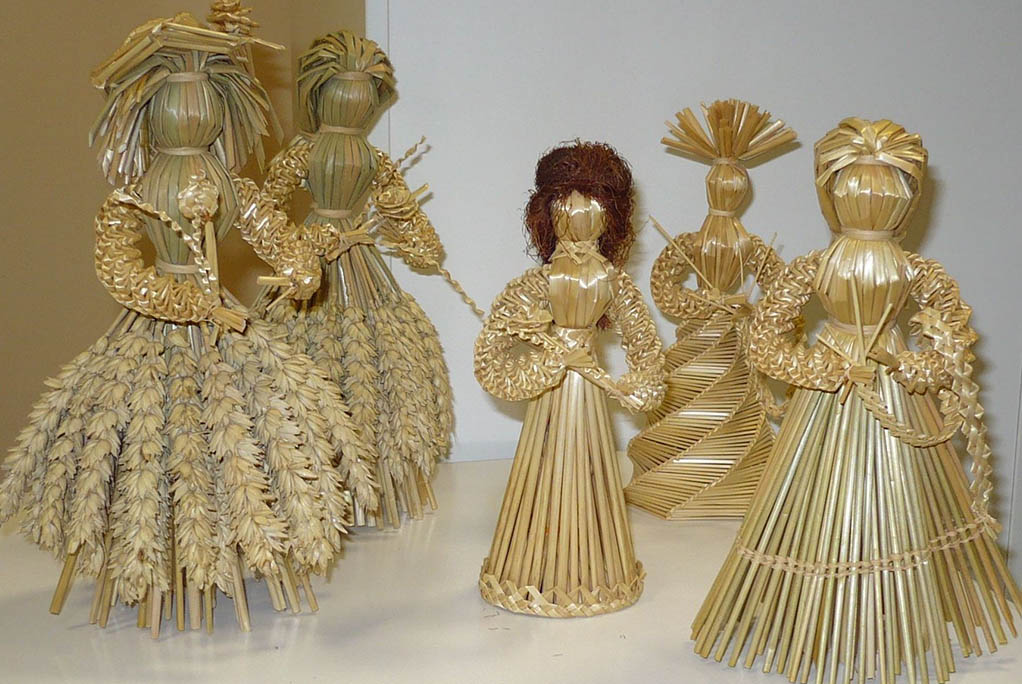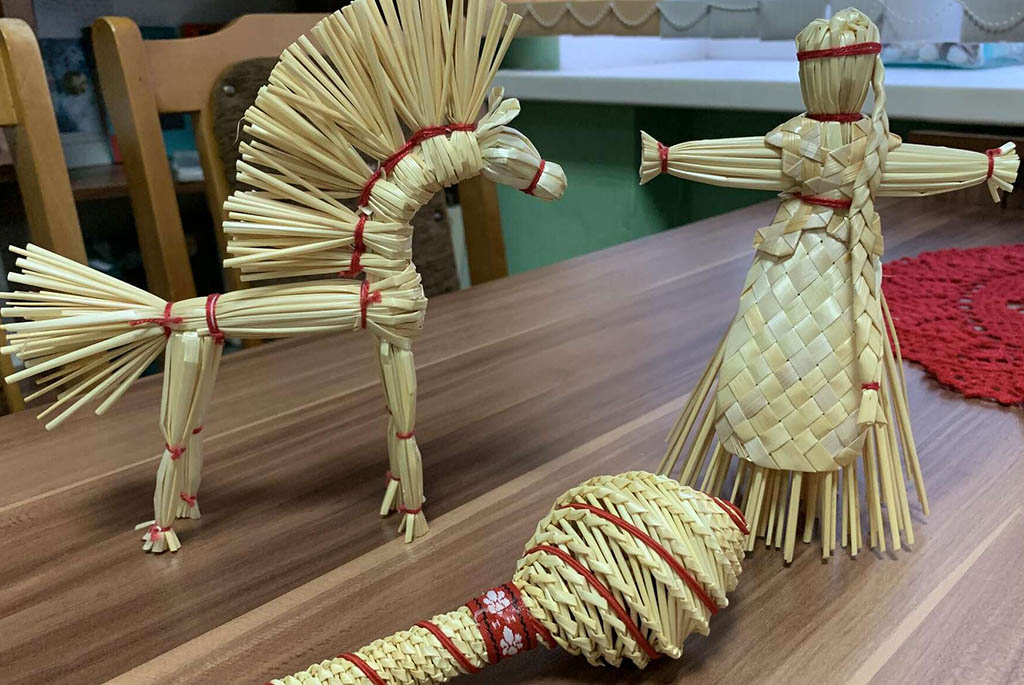Souvenirs, decorative items, and artistic straw products have no global analogues and are closely associated with our country.
The roots of the straw-weaving tradition trace back to ancient times when our ancestors revered the cult of bread and fertility. In their households, any suitable natural material was utilized. Straw was spread for animals in barns, used as bedding, covered house roofs, insulated homes, and was crafted into toys, utensils, and adornments. Belarusians endowed straw with sacred properties; the last sheaf harvested from the field was kept in the house until the new harvest as a symbol of fertility and prosperity.
It is believed that straw weaving originated in Belarus around the turn of the 2nd-1st millennium BC. Rye stalks were primarily used to make straw products because they are longer and stronger than wheat stalks. Straw was hand-picked, dried, and then, to give the material various shades, it was soaked in hot water with the addition of natural dyes – onion skins, cones, tree bark. Straw was woven into accessories, headgear, household decorations, souvenirs, everyday items, and talismans.
One of the most mysterious straw talismans is the spider – a delicate suspended structure made of straw tubes. It was hung in the red corner, above the threshold, over a child's cradle, and in other places considered vulnerable to evil supernatural forces. The spider was woven on the eve of the Christmas season. It hung in the house all year, protecting the family from misfortunes. At the end of the year, the talisman was burned and replaced with a new one.
The straw-weaving tradition was passed down among Belarusians from generation to generation. Folk artisans meticulously preserved and safeguarded unique techniques, passing their craft onto their successors.
There were four main straw-weaving techniques:
- Spiral – the most common, used for making beehives, furniture items, storage containers for food, and boxes for clothing.
- Volumetric weaving – this technique was used for crafting decorative items and also for decorating church interiors.
- Straight.
- Flat.
The latter two techniques were used for weaving baskets, hats, and small boxes.
Straw inlay was used to decorate boxes and Easter eggs. For inlay work, the material was cut into small geometric shapes, glued onto the surface, and then covered with lacquer.
At the turn of the 18th and 19th centuries, Polesie formed its own unique school for creating tsar gates – elements of straw iconostases that were installed in churches. The golden hue of the straw looked rich and festive, making it perfectly suitable for church interiors. Polesie straw iconostases, dated to the early 19th century, can be seen in the National Art Museum and the Historical-Archaeological Museum in Grodno.
Straw weaving became widespread in the second half of the 20th century. Straw products – hats, vases, boxes, baskets, candy bowls, decorative panels – were popular among both villagers and city dwellers.
Factories for producing straw products were opened in Mogilev, Chechersk, and Brest. Among the craftsmen, notable names emerged – V. Gavrilyuk, T. Pavlovskaya, T. Los', who enriched the traditional craft with new expressive techniques and made a significant contribution to the popularization of straw weaving.
The tradition of straw weaving is still preserved in Belarus today. Decorative straw items can be purchased at fairs, exhibitions, souvenir shops, and major stores across the country. Collections of straw artworks are kept in the largest Belarusian museums.
To maintain interest in this form of decorative art, Belarus regularly hosts exhibitions, organizes workshops, and has educational clubs dedicated to straw weaving.
